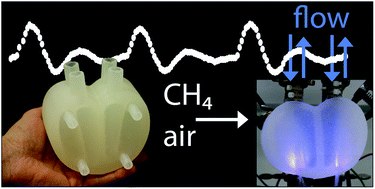3D printed lost-wax casted soft silicone monoblocks enable heart-inspired pumping by internal combustion†
Abstract
We present a gas combustion powered soft pump made from highly durable and flexible polydimethylsiloxane (soft silicone). Our soft pump was able to run for 10 000 combustion cycles at a constant combustion power rating of 500 watts and thus discloses novel prospects for long-lasting soft-machines at high specific energy-densities.


 Please wait while we load your content...
Please wait while we load your content...